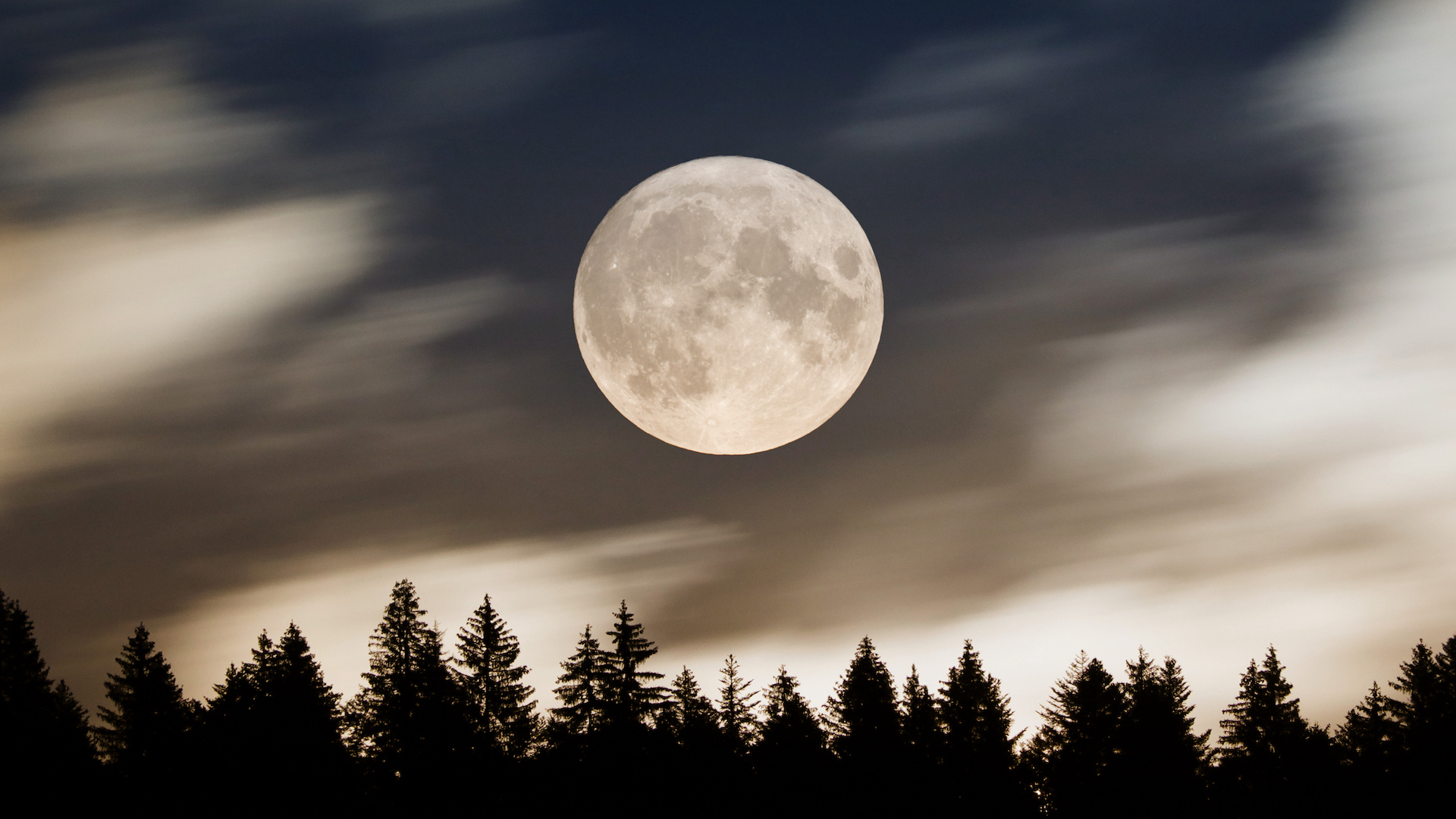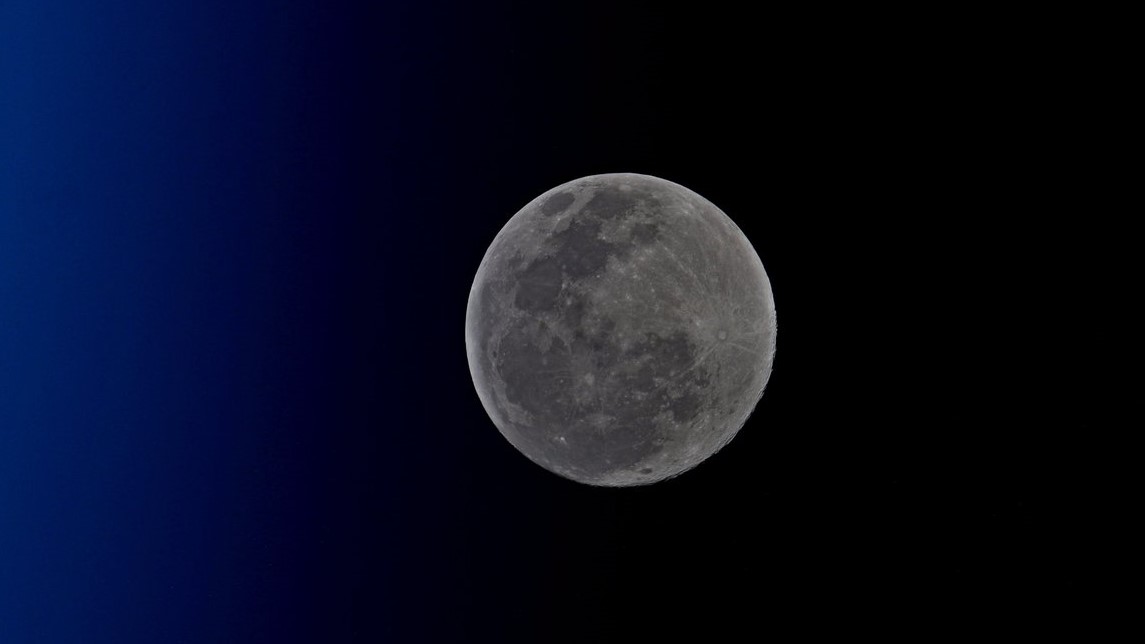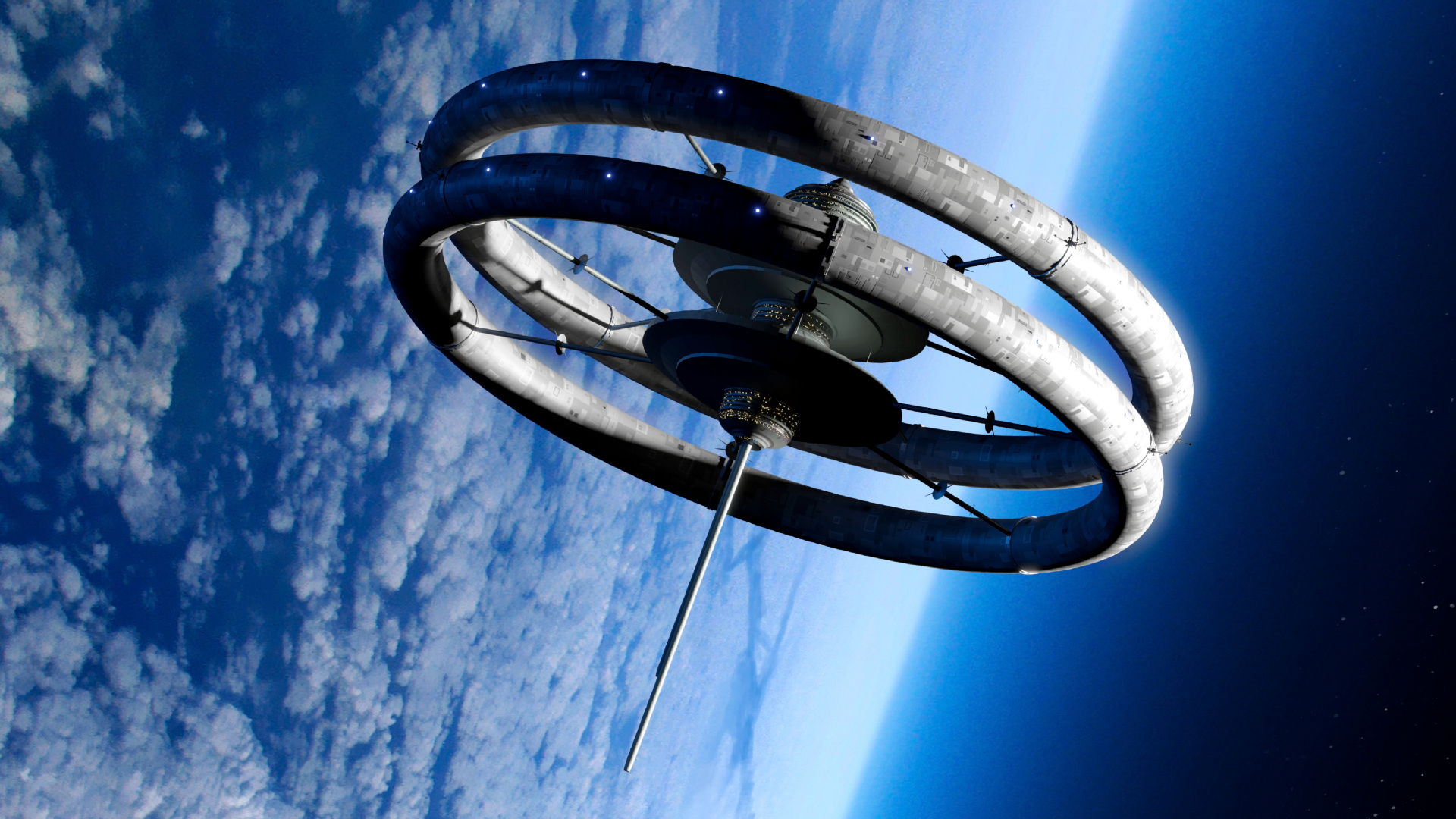August full moon 2025: Full Sturgeon Moon arrives ahead of close planetary pass
The August Full moon: What to see and when it will make a close pass by Saturn and Neptune.

Editor's note: Well, the August full moon certainly didn't disappoint and we've got the photos to prove it! Head over to our Sturgeon Moon wrap story to see some of the best shots from around the world.
The Full Sturgeon Moon will occur on Aug. 9, at 3:55 a.m. EDT (0755 UTC), according to the U.S. Naval Observatory. The moon will make a close pass to Saturn and Neptune just three days later on Aug. 12.
A moon is full when it is exactly on the opposite side of Earth from the sun. Lunar phases are measured according to the longitudinal position of the moon in its orbit, and as such happen at the same time from the point of view of Earthbound observers. If one is in Los Angeles, for example, the full moon is at 12:55 a.m. on Aug. 9, whereas in London it is at 8:55 a.m. (British Summer Time). In New Delhi, the full moon is at 2:25 p.m. local time.
The moon is always close to the ecliptic, the plane of Earth's orbit as projected on the sky. The ecliptic is also the region planets wander in, and as such the moon passes close to them often; in this case, it will come within about three and a half degrees (approximately seven lunar diameters) of both Saturn and Neptune, though only the former planet is naked-eye visible.
Close pass to Saturn
On Aug. 12, three days after the full moon, our satellite will pass three and a half degrees to the north of Saturn at 1201 UT. This is in daylight for much of North America; it is at 8:01 a.m. EDT in New York and 7:01 a.m. CDT in Chicago. In Denver, it is at 6:01 a.m. MDT, only nine minutes ahead of sunrise, which is at 6:10 a.m. On the west coast, the approach happens at 5:01 a.m., a full 72 minutes before the sun rises at 6:13 a.m. Observers in Anchorage, Alaska, will see the pass happen at 4:01 a.m., with sunrise at 6:01 a.m. local time, while sky watchers in Hawaii will see it at 2:01 a.m. local time. In the western Pacific, the close pass is even earlier; in Tokyo, it is at 9:01 p.m. local time on Aug 12. The moon rises there at 8:20 p.m.; the moon will be at just 8 degrees high in the east with Saturn just below it at six and a half degrees, just to the right of the moon.
In the Southern Hemisphere, the positions of the moon and Saturn will appear switched; In Adelaide, Australia, the close approach is at 9:31 p.m. local time, and the moon will be at about six and half degrees above the eastern horizon with Saturn at the 8 degree mark; the moon will be to the left of and below Saturn.
Visible planets
On the evening of Aug. 8, as the moon approaches full phase, it rises in New York at 8:02 p.m. Eastern, and the sun sets at exactly the same time. The moon reaches its highest altitude when it transits at 12:59 a.m. on Aug. 9, and will be 30 degrees above the southern horizon in the constellation Gemini. Moonset is at 5:04 a.m. Eastern Time.
Breaking space news, the latest updates on rocket launches, skywatching events and more!
As the moon rises, the only planet in the sky is Mars, which will be low in the west — about 20 degrees high — and difficult to see against the still-light sky; in New York the planet sets at 9:53 p.m. Civil twilight ends at 8:32 p.m., so one can just catch Mars as the sky gets darker, though it will only be 15 degrees above the western horizon.
As the night progresses, Saturn will rise at 9:56 p.m., in the constellation Pisces. Saturn is brighter than the stars of Pisces and so is readily visible; the planet crosses the meridian, or transits, at 3:52 a.m. and reaches an altitude of 48 degrees.
Next to rise — in the wee hours of Aug. 9 — is Venus and Jupiter. They will be close together in the sky, looking almost like a pair of stars. Venus rises first, at 3:05 a.m. EDT, and Jupiter at 3:14 a.m. Venus is immediately recognizable as it is so much brighter, while Jupiter is below and to the left of Venus. By 5:00 a.m. Jupiter is 17 degrees high and Venus is 19 degrees; sunrise is at 6:00 a.m. and Venus should remain visible until about 5:45 a.m., though that will vary a bit depending on factors such as weather.
For Southern Hemisphere observers, the full moon will be higher in the sky; it is the austral winter and as such the days are shorter and sky, being "upside down" from that point of view, puts the moon higher than in mid-northern latitudes. In Santiago, Chile, the sun sets at 6:09 p.m. local time; moonrise on Aug 8 is at 5:43 p.m. and the moon transits at 12:45 a.m. Aug. 9, 75 degrees above the northern horizon.
From Santiago, which is about as far south of the equator as Los Angeles is north of it, Mars is more visible than in the Northern Hemisphere. Mars sets at 9:40 p.m. and by 6:30 p.m., as the sky is getting darker after sunset, it is still 37 degrees above the western horizon. Moonrise is at 5:34 p.m., so the moon and Mars will be in the sky at the same time.
Saturn rises at 9:33 p.m. in Santiago, and transits at 3:40 a.m. Aug. 9. When Saturn crosses the meridian, it will be 58 degrees above the northern horizon.
Venus rises at 5:15 a.m., and Jupiter at 5:30 a.m. Sunrise isn't until 7:26 a.m., so by about 7 a.m. Venus and Jupiter are 17 and 15 degrees, respectively, above the northeastern horizon. Venus is to the left and above Jupiter.
Constellations
In mid-northern latitudes — New York, Paris, or Tokyo, for example — the summer stars are ascendant in the evenings, and the sky gets dark enough to see the stars between 9:00 p.m. and 9:30 pm. local time. At that point, the moon is well above the horizon, and it is bright enough that it tends to wash out nearby stars. That said, by 9:30 p.m., if one looks directly south, one can see Antares, the heart of Scorpius, the Scorpion. Antares is a distinct red-orange color and from New York City it will be about 20 degrees above the south-southwestern horizon; to find it one can look at the moon and turn about a quarter of the way around the sky.
From Antares, one can trace the curved line of stars downward that marks Scorpius' tail (this is down and to the left). Looking to the right of Antares, one might see three stars, making a backwards "C" shape, which are the scorpion's claws.
Above Scorpius is a fainter constellation that is a large, tall rectangular pentagon of stars, though they tend to be fainter than many. (The shape looks like a tall rectangle with a triangle on top, rather like a stretched A-frame house). This is Ophiuchus, the Serpent-holder.
If one looks almost directly overhead, one of the brightest stars in the area will be Vega, the alpha star of Lyra, the Lyre. Vega is one of three stars that make up the Summer Triangle. If one turns to Vega (southeast) and goes directly down towards the moon (and the horizon) to the next bright star, that is Altair, the "eye" of the Eagle. To the left (northwards) of Vega and Altair is Deneb, the brightest star in Cygnus, the Swan. All three stars are bright and distinctly white with a slight bluish tinge when the sky is very clear.
Southern Hemisphere observers will see the sky get dark much earlier, between 7:00 p.m. and 7:30 p.m. By 7:30 p.m. in Santiago, Chile, the moon is 21 degrees high in the east. Altair, the southernmost member of the Summer Triangle, will appear to the left of the moon (northwards). If one turns so that the moon is on the left, one is facing south; turning one's gaze to the south-southwest, one can spot the Crux, the Southern Cross, about halfway between the zenith and the horizon. Looking just above and to the left of Crux, one first sees Hadar, and then Rigil Kentaurus (Alpha Centauri), both in Centaurus.
From the latitude of Santiago, Buenos Aires, Cape Town or Melbourne, Antares will appear almost directly overhead in the early part of the night, and one can trace the curve of the Scorpion's body to the end of the tail where two stars called "cat's eyes" show the Scorpion's stinger.
Moon lore
The August full moon name in the Farmer's Almanac is the Full Sturgeon moon because the fish are more easily caught in August and early September. Sturgeons are native to both Europe and the Americas; the term probably originated from both European settlers and local peoples in northeastern North America. Other Native peoples had differing names for the August lunation; in the Pacific Northwest the Haida called it the "Salmon Moon" (Chiín Kungáay) — salmon being a much more important fish to the local economy than sturgeon.
The Chinese lunar calendar lunation containing the August full moon is the middle of the sixth lunar month, called Qiǎoyuè (巧月) or Skill Month — but in 2025 the month appears twice because the Chinese calendar requires "leap months" (also called intercalary months) to keep in step with the seasons; this is a function of the fact that lunar months — really the time between lunar phases (usually the new moons) — are about 29.5 days; 12 of them add up to 354 days which leaves 11 days that the year is "short." (Most lunar calendrical systems count months of 29 or 30 days, since they count only whole days). This means that approximately every three years, one needs to add an extra month to make sure that the year (as measured) stays in step with the seasons; the Chinese calendar adds one every 32 or 33 months.
In the Islamic calendar, the August full moon falls on the 15th day of Safar, the second month; Islamic calendars, unlike their Chinese and Hebrew counterparts, do not include intercalary months, which is why the second month is so far out of sync with the Gregorian (solar) Calendar most widely used for civil purposes.
In the Hindu tradition, the August full moon marks the festival of Raksha Bandan, which celebrates the bonds between brothers and sisters. In some Hindu traditions, lunar months begin on the day of the full moon rather than the new moon, and this full moon is the end of a month called Shravana.
The Chinese lunar calendar lunation containing the August full moon is the seventh lunar month, called Qiǎoyuè (巧月) or Skill Month. On the Jewish calendar, this full moon falls in the 15th day of the month of Av, a day called Tu'Bav, considered auspicious for weddings. In the Islamic calendar, the August full moon falls on the 15th day of Safar, the second month.
In some Hindu traditions, the lunar months begin on the day of the full moon rather than the new moon, and this full moon would mark the start of the sixth month, called Bhādo in Hindi and Bhādrapada in Sanskrit. The first day occurs on Aug. 20 since the full moon occurs so close to midnight in India; at 11:56 p.m. on Aug. 19.
One reason for the difference in the numbering of months between calendars is that lunar months differ from the 30- and 31-day months of the Gregorian calendar. A lunar month is close to 29.5 days (the time between successive new moons or full moons). That means 12 lunations are about 11 days short of the 365-day solar year (really, 365 and one-quarter days). Some lunar calendrical systems add what is called an intercalary month — an "extra" 13th month to keep the months in step with the seasons; the Chinese calendar will add one next year, for example, and the Jewish calendar added one in 2024. Islamic calendars do not use this system; the months and days are allowed to "drift" against the Gregorian date.
Editor's note: If you snap an awesome photo of the Full Sturgeon Moon that you'd like to share with Space.com and our news partners for a potential story or gallery, send images and comments to us at spacephotos@space.com.

Jesse Emspak is a freelance journalist who has contributed to several publications, including Space.com, Scientific American, New Scientist, Smithsonian.com and Undark. He focuses on physics and cool technologies but has been known to write about the odder stories of human health and science as it relates to culture. Jesse has a Master of Arts from the University of California, Berkeley School of Journalism, and a Bachelor of Arts from the University of Rochester. Jesse spent years covering finance and cut his teeth at local newspapers, working local politics and police beats. Jesse likes to stay active and holds a fourth degree black belt in Karate, which just means he now knows how much he has to learn and the importance of good teaching.
You must confirm your public display name before commenting
Please logout and then login again, you will then be prompted to enter your display name.

